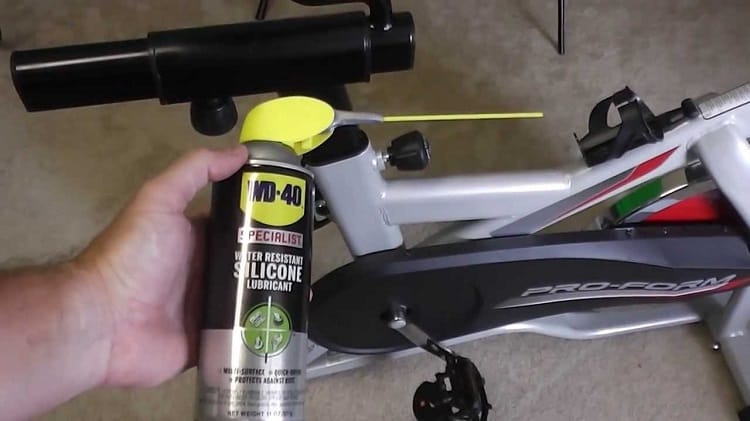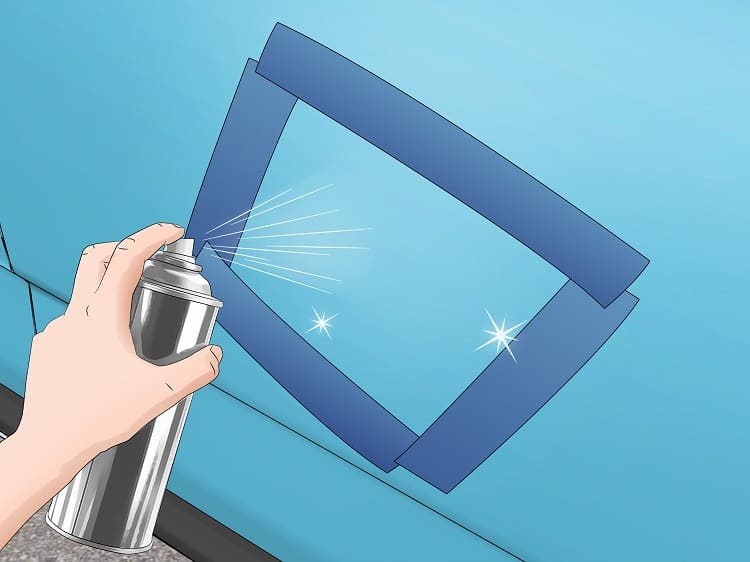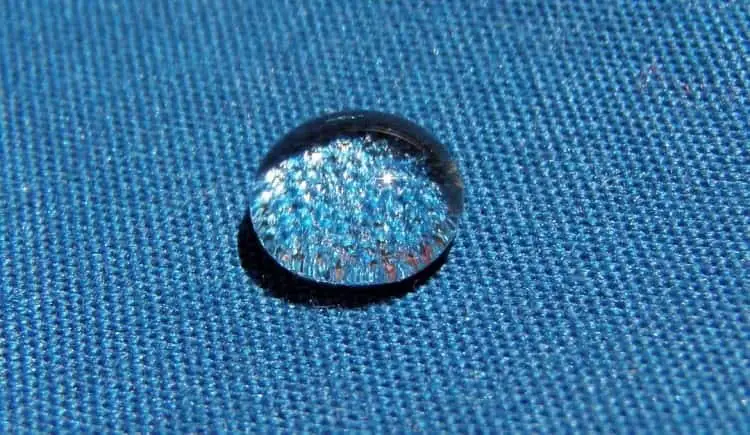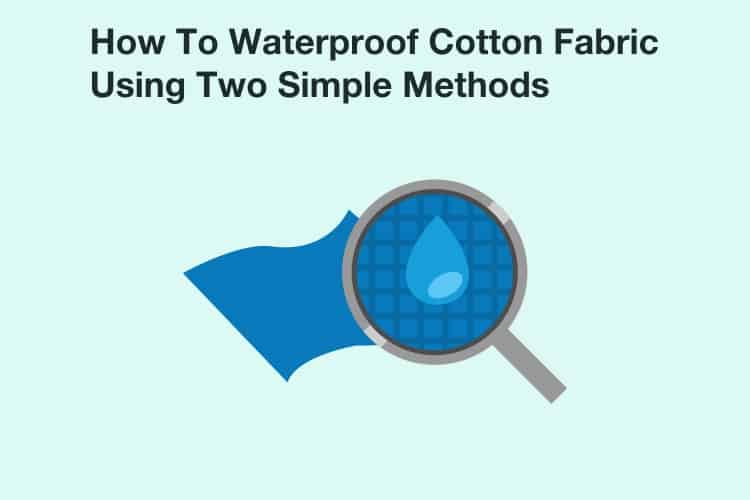How to Waterproof Cotton Fabric Using Two Simple Methods
Wet clothes and gear suck. But it doesn’t have to be this way.
Waterproofing cotton fabric will save you from the dreadful experience of wet gear and clothing. It isn’t too hard to waterproof things at home. Imagine being able to make a DIY water-repellent awning to keep you dry right next to—or in—your hammock. Yes, it is possible.
The effort is well worth the small-time investment required. You’ll be much better off when you’re caught in the rain while hammock camping or braving the outdoors.
There are three methods we recommend you use to easily waterproof cotton fabric.
Using Granger’s Clothing Repel to Waterproof Fabrics
- All in one protection package Designed to clean, Care for and protect...
- Removes dirt and neutralizes odors without impairing performance or...
- Includes; 10oz performance wash, 9. 3oz performance Repel Plus, and a...
The easiest way to waterproof your fabrics and garments is to use Granger’s performance wash and clothing repel detergents.
Granger’s water-repellent performance wash is a detergent that you can use to prime your garments for waterproofing and wash currently waterproof garments.
After using the performance wash, Granger’s other product—clothing repel, see below—can easily be washed in with a quick cycle in the washing machine.
The result is a lasting waterproof coating that is superior to traditional silicone spray coatings.
All of Granger’s products are environmentally friendly, making them a great choice for wearing outdoors. The duo of performance wash and clothing repel can be picked up for very cheap on Amazon.
I would recommend you use these products to waterproof your clothes unless you have a very old rain jacket or piece of outerwear that is already falling apart.
In these cases, it’s better to opt for a silicone spray or wax. If you need to use a silicone spray, we’ve written an informative section later in the article.
How to Use Performance Wash and Clothing Repel to Waterproof Garments
The process first starts with Granger’s performance wash.
Performance wash cleans the clothes of any dirt, dust, or stains, and kills odor-causing bacteria.
- Recommended by the Worlds leading Technical Outerwear Manufacturers /...
- Adds NO Scent or Optical Brighteners...Perfect for Hunters!
- Throughly Cleans, De-odorizes and Maintains Water-Repellency
Using performance wash also primes the garment for being waterproofed with the clothing repel wash.
Here’s how to use the performance wash to clean your garment and prepare it for waterproofing.
Using performance wash to prepare garments for waterproofing
- Scrape off any caked-on mud or dirt from the fabric
- Make sure your washer’s detergent bay is free of any previous detergents. If you’re worried your washing machine still has some lingering detergent, you can run an empty cold cycle without any detergent to wash out any leftover detergent.
- Zip up any Velcro pockets and close any pockets on your garments.
- Pour two capfuls of performance wash for a single jacket or pair of trousers. Add three capfuls of performance wash for two garments. If you need to wash more than two garments, split them into separate loads, according to the performance wash instructions.
- Place your garments in your washing machine.
- Let your washer run a thirty-minute hot water wash and rinse cycle with a water temperature around 30 degrees Celsius (86 degrees Fahrenheit). Be mindful to read your garment’s wash tags, in case they need extra care when washing.
- After washing, either air dry or tumble dry on low to medium heat if your garment’s drying instructions allow.
Now you’re ready to move on and use the clothing repel wash to apply a waterproof coating.
Waterproofing Using the Clothing Repel Wash
Make sure your washer’s detergent bay is free of any previous detergents.
If you’re worried your washing machine still has some lingering detergent, you can run an empty cold cycle without any detergent to wash out any leftover detergent.
- Zip up any velcro pockets and close any pockets on your garments.
- Pour two capfuls of clothing repel for a single jacket or pair of trousers. Add three capfuls of performance wash for two garments. If you need to wash more than two garments, split them into separate loads, according to the clothing repel instructions.
- Place your garments in your washing machine.
- Let your washer run a wash cycle with a water temperature around 30 degrees Celsius (86 degrees Fahrenheit). Be mindful to read your garment’s wash tags, in case they need extra care when washing.
- After washing, either air dry or tumble dry on low to medium heat if your garments drawing instructions allow.
Your garments should now be clean and have a new waterproof coating. The Granger’s coating is pretty tough and should last a while of camping and outdoor adventures.
Can You Wash Clothes Waterproofed With Granger’s Products?
Yes, you can! You shouldn’t use ordinary detergents, but you can still wash your waterproof clothing without ruining the coating.
Just like how you normally would waterproof your garments with Granger’s, you can wash them and apply the coating again at the same time.
First using the performance wash, and then another cycle with the clothing repel to apply a waterproof coating.
Avoid using traditional detergents if you wish to retain the waterproofing. Regular detergent can strip the waterproof coating and you’ll be left back at square one.
Using Alum For Waterproofing Fabrics
This does take a bit of manual work, but the results can be top-notch.
Before using alum (a compound usually containing aluminum) on your fabrics, it is best to wash them really well in your washing machine, so as to remove any dirt and debris. Let them dry thoroughly, preferably by air, and then get on with using the alum.
What you’ll need:
- Two simple plastic basins of at least two gallons
- An alum or aluminum powder (you can these in your nearest grocery store, for sure)
Prepare your basins and alum / aluminum powder, and heat some water.
- Put the alum or the aluminum powder in the first basin and mix it with hot water of at least two gallons
- Stir and submerge your fabrics in the water
- Make sure it stays soaked for at least two hours
- Air-dry the fabrics, making sure there are no folding
Using Performance Repel Spray to Waterproof Fabrics
- HIGH PERFORMANCE WATERPROOFING of technical, performance, sports,...
- NEW Improved Formulation / Made in England / Granger's Since 1937
- ADDS NO SCENT or optical brighteners...Great for Hunters!
Performance repel spray is an environmentally friendly, fluorocarbon spray that doesn’t require heat to activate its tough waterproof protection.
After a quick waterproof spray and an air dry, garments will be waterproof and retain their breathability.
I find that Granger’s Performance Repel spray works better than silicone sprays of equal price.
Silicone sprays seem to wash off easier and don’t have as much power as fluorocarbon when it comes to repelling water.
Applying Performance Repel Waterproof Spray
If you want a spray-on waterproof solution, here’s a great eco-friendly solution from Granger called Performance Repel spray.
It’s more effective than silicone sprays without weighing your clothing down or making it stiff.
Here’s how to apply Granger’s Performance Repel spray.
For the best results, wash your garment with Granger’s Performance wash and apply the performance repel spray while the garment is drying but still damp.
- Spray Performance Repel directly onto a freshly cleaned, damp garment from around 15cm away.
- Remove any excess drops or droplets with a clean cloth.
- Hang the treated garment to dry naturally, or follow the drying instructions found on the garment’s care label.
Can You Wash Garments Waterproofed with Performance Repel?
Yes, similar to the wash-in clothing repel, you can wash garments waterproofed with performance repel.
It’s best to wash the garments with performance wash to prime them for another touch-up coat of performance repel after the wash.
Using Silicone Spray to Waterproof Fabrics

Silicone spray is an alternate method to waterproofing clothes and cotton fabric. It’s not as easy nor effective as using performance wash, clothing repel, or performance repel spray.
If you need an alternative method for waterproofing larger camping gear consider using silicone spray.
You’ll need a can of silicone waterproofing spray, which you can easily find on Amazon for cheap.
Silicone is non-toxic and perfectly safe to use on any of your gear. Once you have your spray can of silicone, you’re ready to put on a waterproof coating in only a few minutes.
The process is very similar for most brands but may differ slightly with instructions.
In this instance, I’ll be detailing how to use the Scotchgard waterproofing spray. It’s got great reviews on Amazon and can be picked up for pretty cheap. This spray keeps the fabric breathable afterward and it usually only takes one coat to waterproof most things.
- WATER REPELLENT SPRAY: Two Scotchgard Outdoor Water Shield Sprays,...
- IDEAL FOR MANY OUTDOOR ITEMS: Water repellent spray is ideal for use...
- SAFE FOR MANY FABRICS: Use this fabric spray before Spring and Summer...
Preparing Your Spray Area

This station is used for spray painting, but the idea remains the same.
The first step to waterproofing rain gear fabric is to make sure you have a clear working area. Find an area outside that you wouldn’t mind getting a little messy. Clear out any objects from the immediate vicinity that you wouldn’t want any spray over.
Source a piece of cardboard or an old sheet back as a backstop for the silicone spray. Lay down your choice of backstop on the ground to complete the setup of your area.
Preparing Your Fabric/Gear
Now it’s time to prepare your fabric or piece of gear.
Make sure your fabric is clean and doesn’t have any loose dirt, mud, or paint on it. Loose materials could cake off and leave parts of your item without waterproofing.
Once your item is clean, lay it down flat on your backstop flat without any large wrinkles or creases.
If you’re spraying a pair of boots, untie the laces and loosen them to fully cover the tongue and laces. Your item is now ready to be sprayed with a waterproof coating.
Spraying The Coating
Spraying the waterproof coating isn’t too hard. Within a few minutes, you’ll have a waterproofed item that will be fully protected after about 12 hours of drying.
Check the directions on the can of your choice waterproofing spray. This tutorial assumes that you’re using the Scotchgard waterproof spray.
Most product instructions are fairly similar. So if you follow this step-by-step guide using any spray, you likely won’t encounter any issues.
- Shake up your waterproofing spray bottle
- Hold the can 6 to 8 inches away from the item you wish to waterproof
- Spray the fabric item with sweeping strokes to evenly coat it.
- Keep spraying until the item is evenly coated. The coating won’t be soaking wet, but it will be wet enough to notice that the item is no longer dry.
- If your item has more than one side, gently flip it over and spray the other side the same way.
- Wait six to eight hours for the first coat to dry. Your spray may take longer to dry, so be sure to follow the instructions on the can.
- After waiting 12 to 24 hours, you can apply a second coat for extra waterproofing toughness.
After Waterproofing
Your item should now be waterproofed. Silicone waterproofing spray maintains the breathability of fabric while giving it a tough waterproof coating.
If you find that your fabric isn’t as waterproof as you like, try applying another layer.
Keep in mind that your fabric will get slightly stiffer with each coat. This is because the silicone dries in fabric threads to keep it waterproof.
Can You Wash Silicone Waterproofed Fabric?
Yes, fabrics waterproofed with silicone spray can be washed. Be warned, however, that you will likely need to apply the silicone spray after washing.
Detergents will strip away the silicone coating, in some cases entirely. While your fabric will likely still be water-resistant after a wash, to keep the fabric waterproof, apply another coat and allow it to dry to restore the finish.
Luckily, the Scotchgard spray we recommend can apply quite a few coats with one can.
Using Beeswax and Linseed Oil To Make Fabric Waterproof
Here we fall into using natural products (beeswax and linseed oil) to make fabrics waterproof. While the procedure is a bit different, the results can be amazing (and cheap!) all the same. Just remember to wash and air-dry your fabrics thoroughly before you try either of these.
What you’ll need:
- Purified beeswax or linseed oil
It can be a real time-saver to obtain an already purified beeswax from your local store. However, if you want to use a fully natural product, you can pick up some natural beeswax in a beehive. Be very careful, though, as if you get bees angry they will exact their revenge over you!
Using Beeswax
- Polishes all wood surfaces to a soft luster with a protective coating...
- Introduces conditioning oils that “feed” the wood and helps keep...
- Enhances the natural beauty and depth of grain in finished and...
Beeswax contains some impurities, so the best way to purify it at home is to put it in a water container. Fill the container with water, and put it on the stove. After a while the beeswax will melt in the water and stay buoyant at the top, while the debris will fall down. Pick it up, let it cool down, and use it for waterproofing.
Here are the step-by-step instructions for this DIY project, starting with beeswax:
- Spread your fabric over a flat surface
- Take your purified beeswax ‘brick’ and rub it over your fabric
- Don’t be too aggressive with it, you should do it without much effort
- Repeat until you’ve got an uniform graying over the fabric
Now you’ve got your naturally beeswax waterproofed fabric.
Using Linseed Oil
- Penetrates deep and protects wood creating a quality finish for wood...
- Apply to raw wood only
- Increases water repellency and weather resistance
Linseed oil is another DIY method in making fabric water-repellent. In contrast with beeswax, linseed oil is liquidy, so the method of application differs a bit.
- Take your fabric and spread it over a flat surface
- Apply an even coat of linseed oil to the surface; you can pour it directly on top, or you can even use a paintbrush to spread it out evenly
- Wait for 30 minutes before wiping off excess oil
- Allow 24 hours for the fabric to dry, even if you want to treat the other side
Now you’ve got your own DIY oilcloth or tablecloth without using a spray bottle to make it water-repellent.
Using Iron-On Vinyl To Make Fabric Waterproof
Another DIY method you can use is iron-on vinyl. This method can be really effective, but can also be a hit-and-miss if not done properly. The advantage of using iron-on vinyl is that you can also apply it directly on upholstery in addition to regular clothing.
What you’ll need:
- Iron-on vinyl
- An iron
As always, before applying the vinyl make sure you clean your fabrics thoroughly. Washing and air-drying in advance usually does the trick. In the case of upholstery, taking out the fabric to wash and dry it would be best. But vacuuming it can also do the trick, especially in cases where the fabric is not too dirty.
After this, follow the step-by-step instructions below:
- Lay your fabric on a flat surface (i.e. a table) to avoid folds and creases appearing
- Cut your vinyl to fit the fabric. Try to cut a bit larger slices than your fabric, to make sure you cover it all
- Put the vinyl over your fabric, making sure to overlap it. Vinyl for this purpose often has two sides, a smooth, and a shiny or sticky one. The shiny one is the one to be in contact with the fabric
- Iron the vinyl over the fabric by using medium heat, making sure it glues thoroughly (but don’t hold too much on any single spot to avoid burns, and to avoid melting the vinyl, though!)
If you are missing an iron, you can also try using your hair dryer. It will take more time, but the results are comparable.
- STRONGBOND: Our one of a kind SportFlex heat transfer vinyl gives you...
- ALLURING COLORS: SportFlex Iron On comes in 30 colors: Amethyst,...
- CUTS & WEEDS EASILY: With Cricut smart cutting machine products,...
How Does Waterproof Spray Work?

Waterproof sprays work by applying a protective silicone or fluorocarbon coating to your fabrics.
The coating repels water by creating a barrier between the water and the absorbent fabric. Silicone and fluorocarbons repel water since they don’t absorb or dissolve in it, and have properties that make water bead up and roll off their surface. Thus they belong to the group of so-called ‘oleophobic’ substances.
Both silicone and fluorocarbons are fairly lightweight too, making it a better solution for weight and waterproofing than heavy waxes.
After the coating spray dries, you’ll have a great waterproof coating that’ll protect all your fabrics from getting wet and waterlogged.
Silicone and fluorocarbons also maintain the fabrics’ breathability, making it a great choice for waterproofing anything from camping gear and clothes to outdoor cushions and canvas.
Alternative approaches at making your materials water-repellent include using soybean and turpentine oil, and paraffin wax. As you can see, this can be one of those DIY projects that you’ll absolutely love doing before catching the rain, as you see your clothes and equipment remain dry instead of soaking wet.
Your fabrics would not only become resistant to water but also to mildew and other potentially dangerous or bothersome invaders, such as ants and termites. With these methods, you can even treat outdoor pillows and cushions, as well as awnings, canvas and other parts of your equipment.
Read also our other guide about how to stay dry when hiking in the rain.
References:











![9 Final Thoughts And Items For Your First Camper Adventure [Checklist] 20 RV Camping Checklist](https://kempoo.com/wp-content/uploads/2018/11/first-camper-adventure.jpg)

Mike
Can you use Granger’s on sofa and chair upholstery to protect from dog urinating on it?
Thanks
I want to make a pushchair footmuff in a patchwork design but need to proof it. Can I use your product to do this, i.e. is it safe for items that a baby will be using?
fluorocarbon is toxic
sorry, but fluorocarbon spray is not an environmentally friendly. DWR coating based on fluorine is very toxic for environment and so to the person wearing it. I do not buy anything with PFC